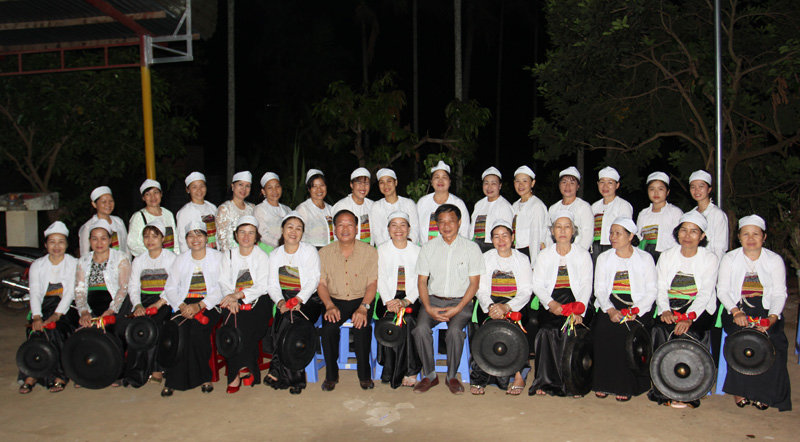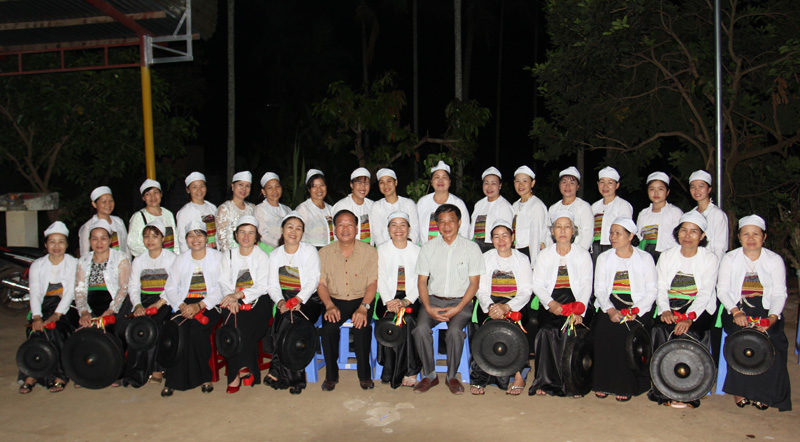


 The leaders from the provincial Art and Literature Association with gong
artisans of Muong in Hoa Thang commune, Buon Ma Thuot city, Dak Lak province.
The leaders from the provincial Art and Literature Association with gong
artisans of Muong in Hoa Thang commune, Buon Ma Thuot city, Dak Lak province.
Hoa Thang commune is about 7 km from the city center. Muong ethnic people of Hoa Binh in Hoa Thang accounts for over 13.47% of the commune's population (over 2,300 people), concentrated in 3 villages 1, 2, and 3. During the investigation, we met with many people of the different age groups in different Muong regions. Each person has different living conditions, but they all have one thing in common, all they miss their homeland, Hoa Binh, very much. Meeting us, knowing that we are Hoa Binh, everyone enthusiastically and warmly welcomed us. There are many people, who have not been able to return home since they were born until they are 40 - 50 years because of the conditions.
Muong ethnic people of Hoa Binh in Hoa Thang have preserved many customs such as funerals, marriage, ancestor worship, and clan relations still having many old features. In the story, we often heard the names of old Muong places in Hoa Binh. Many major places we still do not understand, because the old Muong name has been replaced by many new ones.
Ms. Bui Thi Hanh (born in 1960) lives in village 3, Hoa Thang commune. Her parents lived in Muong Coc (Thuong Coc - Lac Son) before 1954. She is more fortunate than many other people. She has been able to return to the hometown many times. She is diligent in researching so she is quite knowledgeable about Muong culture. She told us many stories about ancient Muong land, about 4 Muong lands, Bi - Vang - Thang - Cave.
In the way of searching, we continued to meet many more people such as Mr. Nguyen Van Dong, Mr. Dinh The Dong, Mr. Quach Vi, the family of Mr. Dinh Cong Chinh (a prestigious shaman in Hoa Thang), the family of Mr. Dinh Cong Thuan… They are the ones who remember and know quite well about the old Hoa Binh. Among them, Mr. Guo Canh was probably the one who surprised us the most. He was born in 1950, from Muong Khu (ie, Ngoc Lau commune - Lac Son). When he was just 4 years old, he followed his family to the South. Over the past these years, he has not returned to Hoa Binh once, but strangely he remembers famous places in Hoa Binh with the old and new names, the story about the langurs of Muong, large and small Muong regions in Hoa Binh. He told the stories happening nearly a century ago, but it looks like that they just happened yesterday next to his house. He remembered a lot of the ancient Muong places. He gave me a map of Hoa Binh tourism, in which, he wrote quite a lot of old places beside new ones on the map with pen and ink.
With different information from many people and from Mr. Quach Canh, we have built a list of names of Hoa Binh old places.